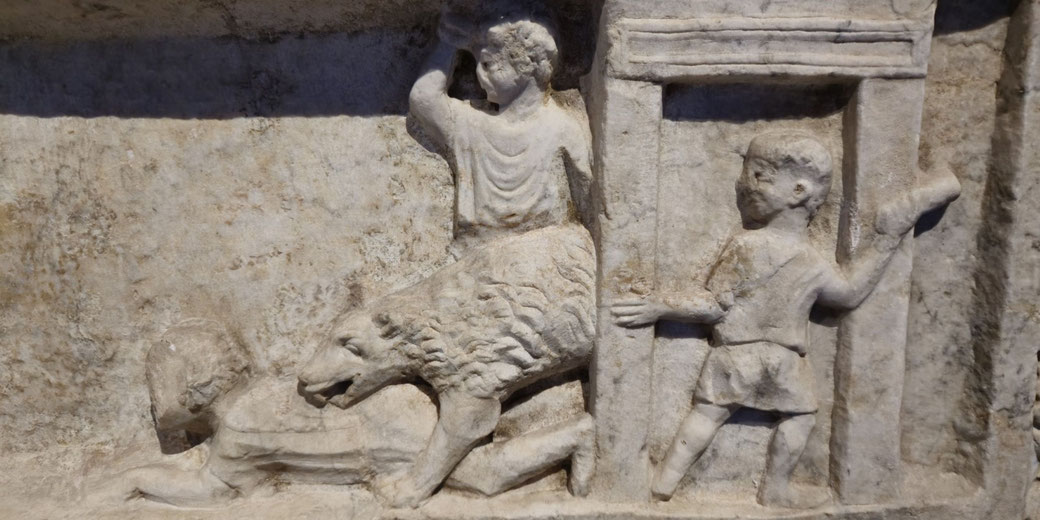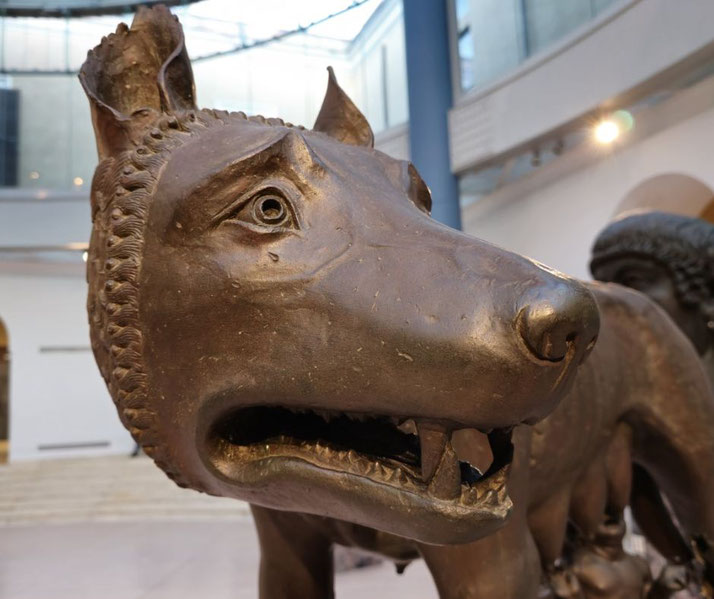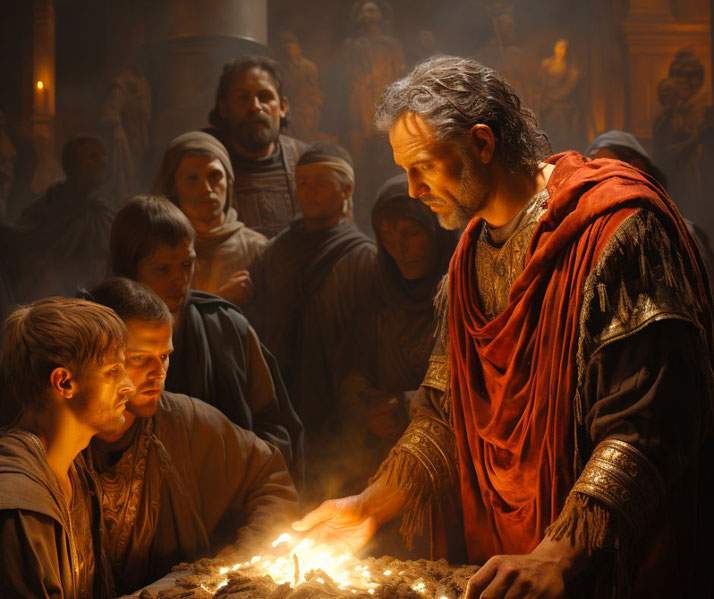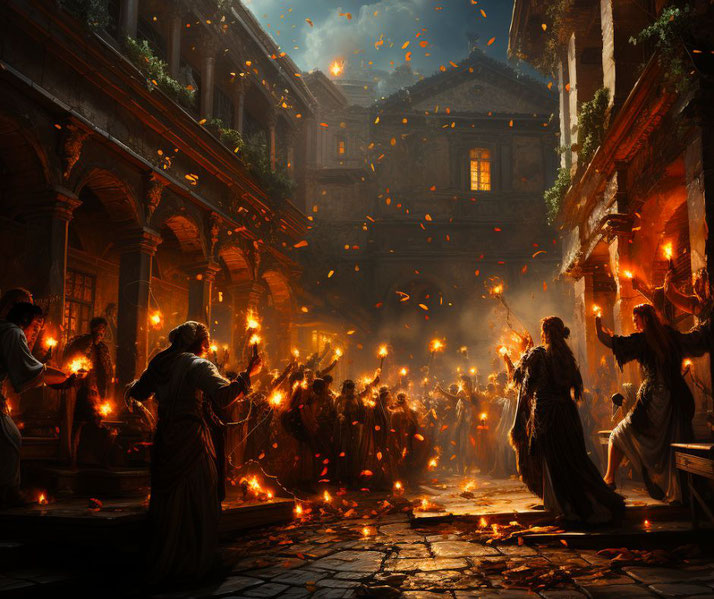The bizarre and sordid religious rites of Ancient Rome's Lupercalia Festival

Lupercalia, an ancient Roman festival was deeply rooted in the strange pastoral traditions of early Rome. Dedicated to Lupercus, the god of shepherds, it was aimed at promoting fertility and warding off evil spirits.
The rituals of Lupercalia were a curious blend of the sacred and the profane, involving animal sacrifices, ritualistic runs around the Palatine Hill, and fertility rites that saw women willingly struck by thongs made from animal hides.
The ancient origins of Lupercalia
The Lupercalia festival is one of the oldest in ancient Rome, believed to be founded before the city itself.
Closely linked to pastoral traditions, the festival was initially a rite of passage for young men and a celebration of fertility, aimed at both livestock and humans.
The festival was held on February 15th, in the middle of the month that took its name from the Roman spring cleansing ritual of Februa.
The date's significance is thought to be tied to the agricultural calendar, marking a time when the first signs of spring began to appear and when farmers prepared for the new planting season.
The festival was celebrated primarily on the Palatine Hill, one of the Seven Hills of Rome, where the legendary founders of the city, Romulus and Remus, were said to have been suckled by a she-wolf in the Lupercal Cave.
This mythological connection imbued the festival with an aura of sacredness and historical importance.
Over time, Lupercalia evolved to include not just the rural populace but also the urban elite.
It gained further prominence during the era of the Roman Republic and continued into the days of the Roman Empire.

The mythology behind the Lupercalia Festival
Central to the festival's mythology are Romulus and Remus, the legendary twin brothers who are said to have founded Rome.
According to legend, they were abandoned as infants and left to die by the river Tiber but were miraculously saved and nurtured by a she-wolf in the Lupercal Cave on the Palatine Hill.
This cave became a sacred site and the focal point of the Lupercalia festival, symbolizing both the wildness of nature and the nurturing aspects of femininity.
The god most closely associated with Lupercalia is Lupercus, often identified with the more well-known gods Faunus or Pan.
Lupercus was the god of shepherds and was believed to protect against wolves and other dangers that threatened flocks.
The festival's rituals aimed to invoke his blessings for fertility and prosperity, not just for livestock but also for the people of Rome.
The Luperci, priests dedicated to Lupercus, played a central role in these rituals, embodying the god's dual nature as both wild and nurturing.
The intertwining of these mythological elements served to elevate Lupercalia beyond a mere pastoral festival.
It became a celebration of Rome's legendary origins, a tribute to its divine protectors, and a communal rite that bound its participants in a shared mythic history.
The festival's mythological foundations also provided a framework for understanding the natural world, human fertility, and the cycles of life and death.
In this way, Lupercalia was not just a reflection of societal norms and religious practices; it was also a narrative enactment of the myths that helped define Roman identity and worldview.
The strange rites held during the festival
The festival began with the sacrifice of goats, and sometimes dogs, at the Lupercal Cave on the Palatine Hill.
These animals were chosen for their symbolic associations with fertility and protection.
The Luperci, priests dedicated to the god Lupercus, would then skin the sacrificed animals and cut the hides into long thongs.

Dressed only in loincloths made from the sacrificed animals' skins, the Luperci would embark on a ritualistic run around the Palatine Hill.
This was no ordinary run; as they sprinted, they would strike onlookers, particularly women, with the thongs they carried.
Far from being an act of aggression, this was a much-anticipated part of the festival.
Women would position themselves along the route, believing that being struck would improve their fertility and ease the pains of childbirth.
The act of running was itself symbolic, thought to purify the land and people, driving away evil spirits and misfortune.
Following the run, a communal feast often took place, where participants would share in the meat of the sacrificed animals, further binding the community in a shared religious experience.
The rituals were served social functions, reinforcing communal bonds and social hierarchies.
The participation of high-ranking individuals like Julius Caesar and Mark Antony in various capacities underscored the festival's importance to both the religious and political life of Rome.
Why did the Lupercalia festival come to an end?
By the late 5th century CE, the Christian Church had gained significant influence, and many pagan festivals, including Lupercalia, came under scrutiny for their perceived incompatibility with Christian doctrine.
Pope Gelasius I officially banned the festival around 494 CE, condemning it as a pagan practice that had no place in a Christian society.
The suppression of Lupercalia was emblematic of the larger cultural and religious shifts taking place, as Rome transitioned from a polytheistic society deeply rooted in traditional rituals to a monotheistic one guided by Christian principles.
Also, the treatment of women in Lupercalia was considered to be unacceptable by church leaders.
While it is clear that women participated in the festival by positioning themselves to be struck during the ritual run, interpretations of this act vary.
Some see it as a form of subjugation, a ritualized reinforcement of patriarchal norms.
Others argue that it was a rare opportunity for women to participate actively in public religious life, willingly seeking the strikes as a form of divine blessing for fertility.
Yet, the legacy of Lupercalia has proven to be remarkably enduring. While the festival itself may have been suppressed, its themes of fertility, renewal, and community did not disappear entirely.
Some scholars argue that elements of Lupercalia were absorbed into the Christian celebration of St. Valentine's Day, although this connection is a subject of ongoing debate.
The festival's focus on fertility and love, as well as its timing in mid-February, make it tempting to draw parallels between the two celebrations, even if definitive evidence remains elusive.

What do you need help with?
Download ready-to-use digital learning resources
Copyright © History Skills 2014-2025.
Contact via email
With the exception of links to external sites, some historical sources and extracts from specific publications, all content on this website is copyrighted by History Skills. This content may not be copied, republished or redistributed without written permission from the website creator. Please use the Contact page to obtain relevant permission.





